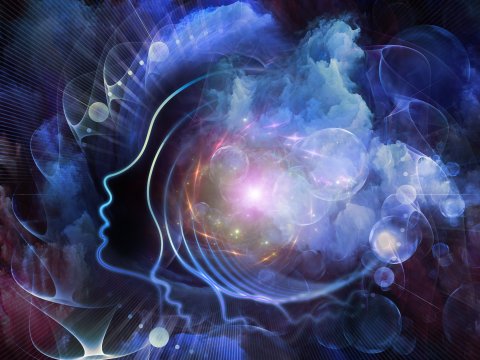March 16 is the World Sleep Day. On this day, conferences and symposiums dedicated to the increase of awareness about the importance of sleep, problems of sleep, and the influence of diseases connected with sleep disorders on the health of people and the society in general are organized. At SUSU, the topic of sleep is studied within the study of stress carried out in School of Medical Biology.
Anton Pashkov, junior research fellow of the Medical and Psychological Clinic REC, told us about modern studies of sleep, about why we dream and how a child’s dream is different from the dream of an adult.

– How do you study sleep at SUSU?
– We are only beginning to study this topic, right now we start conducting research in the sphere of psychophysiology: we are buying equipment and communicate with international colleagues. Sleep is among our prioritized research areas, but so far in a distant perspective. Right now we are mainly focused on studying stress, and I think that we are going to continue the research in this sphere, because sleep disorders during stress is one of the most obvious consequences.
– How well is human sleep studied? How long has it been under research?
– There are many centers around the world that are specialized precisely in the study of sleep. Even if we do not count specialized clinics, there are individual scientific centers where sleep of creatures of various levels, from different types of spineless to humans, is studied in laboratories. Generally speaking, sleep started to be studied from the scientific point of view approximately from the end of the 19th century. The beginning of neuro science which studies brain is dated by the turn of the 20th century. This issue started to be actively researched from the middle of the 20th century, and as sleep is an inseparable part of our life, everybody wanted to understand why we need sleep, can we manage without sleep, can we create medications which would help a person stay awake. So far, these questions are leftunanswered.
– Why do we dream? How long a dream’s duration is today?
– There are different theories. Some scientists assure that dreams are just an epiphenomenon of the brain’s work. In other words, information gets processed inside the brain, and dreams are just a side product of brain operation. Other scientists say that dreams by themselves possess adaptive functions. It should be noted that our visual system is highly developed, but seeing a dream is not just seeing visual images. There are animals with more developed acoustic system or tactile system, then how do they dream? Probably, for them dreaming is just replaying sounds and touches that form their world picture. Scientists agree on the opinion that a dream is some representation of the world picture. Allan Hobson, a scientist who studies brain, says that a dream is similar to a virtual reality generator; in our sleep we try to reconstruct the events that might happen to us in the future, based on the experience of the past.
In general, we have several cycles of sleeps which last for about 90 minutes. There are mainly two phases in a cycle: slow-wave sleep and fast-wave sleep. In turn, slow-wave sleep is divided into 4 more stages. Until 2017, it was considered that we see dreams only in a phase of the so-called “paradoxal sleep”, accompanied with rapid movements of eyes. Last year, an article by Giulio Tononi from the University of Wisconsin (USA) got published, in which he and his colleagues described results of a conducted experiment. They were waking people up in different time and tried to correlate their messages about seeing dreams with the patterns of electro-psychophysiological activity of the brain, recorded with the use of EEG. The most important thing that they showed in the article published in a prestigious journal entitled Nature Neuroscience is that dreaming is not tied to the sleep phase with rapid eye movements; they can be observed during the entire period of sleep.
– Are there differences between dreams of children and adults?
– Of course; first of all, duration of sleep is different. As we know, infants sleep a lot, more than 14 hours. As we grow up, the time of sleep diminishes. Elderly people can consider 5-6 hours of sleep to be enough. Surely, we are not only talking about quantitative changes. There is a hypothesis, proposed by Roffvorg, that the fast-wave sleep, prevailing among infants, is connected with the processes of the nervous system formation. Its share in the total sleep pattern rapidly diminishes when neurons stop their active fission at early stages of ontogenesis.

– What new instruments for sleep researching are used nowadays?
– In order to study sleep, the whole set of equipment used by neuro scientists in their research is applied. They are mainly MRT or electroencephalography, because only an extremely limited range of equipment is applicable to people. In the latest years, functional spectroscopy in the near-infra-red region and transcranial magnetic stimulation joined the list. Regarding the fact that we can’t directly penetrate deep into the brain, we use non-invasive methods which do not damage brain. We have the possibility to study brain of sleeping people at the cell level only during prescribed neurosurgical operations.
– Will we ever be able to uncover the mystery of sleep?
– I think we will, just like the mystery of our brain and all other mental phenomena; it is just a matter of time. Another question that is difficult to answer is whether we will be able to replace sleep, at least partly, with pharmacological medications. Nevertheless, nowadays, within the current research, the question of replacing natural good quality sleep with anything is not even brought up for discussion.




